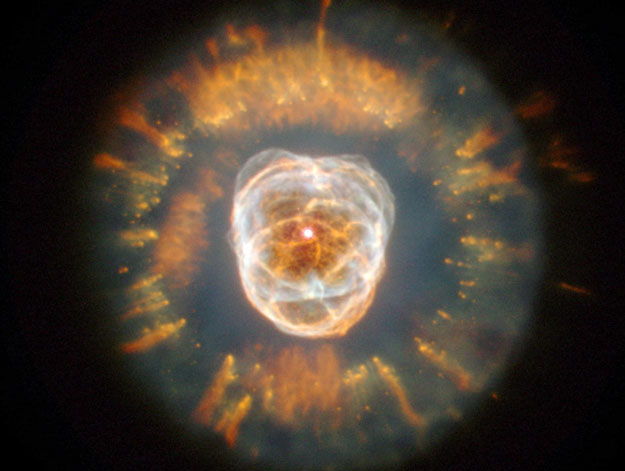
|
Explanation: In 1787, astronomer William Herschel discovered the Eskimo Nebula. From the ground, NGC 2392 resembles a person's head surrounded by a parka hood. In 2000, the Hubble Space Telescope imaged the Eskimo Nebula. From space, the nebula displays gas clouds so complex they are not fully understood. The Eskimo Nebula is clearly a planetary nebula, and the gas seen above composed the outer layers of a Sun-like star only 10,000 years ago. The inner filaments visible above are being ejected by strong wind of particles from the central star. The outer disk contains unusual light-year long orange filaments. The Eskimo Nebula lies about 5000 light-years away and is visible with a small telescope in the constellation of Gemini.
|
January February March April May June July August September October November December |
| ||||||||||||||||||||||||||||||||||||||||||||||||
NASA Web Site Statements, Warnings, and Disclaimers
NASA Official: Jay Norris. Specific rights apply.
A service of: LHEA at NASA / GSFC
& Michigan Tech. U.
Based on Astronomy Picture
Of the Day
Publications with keywords: Eskimo Nebula - NGC 2392 - planetary nebula
Publications with words: Eskimo Nebula - NGC 2392 - planetary nebula
See also:
- APOD: 2025 August 31 Á NGC 7027: The Pillow Planetary Nebula
- APOD: 2025 August 22 Á A Tale of Two Nebulae
- APOD: 2025 August 5 Á NGC 6072: A Complex Planetary Nebula from Webb
- APOD: 2025 July 29 Á A Helix Nebula Deep Field
- APOD: 2025 July 13 Á Planetary Nebula Mz3: The Ant Nebula
- APOD: 2025 June 9 Á Between Scylla and Charybdis: A Double Cosmic Discovery
- APOD: 2025 May 14 Á NGC 1360: The Robins Egg Nebula
